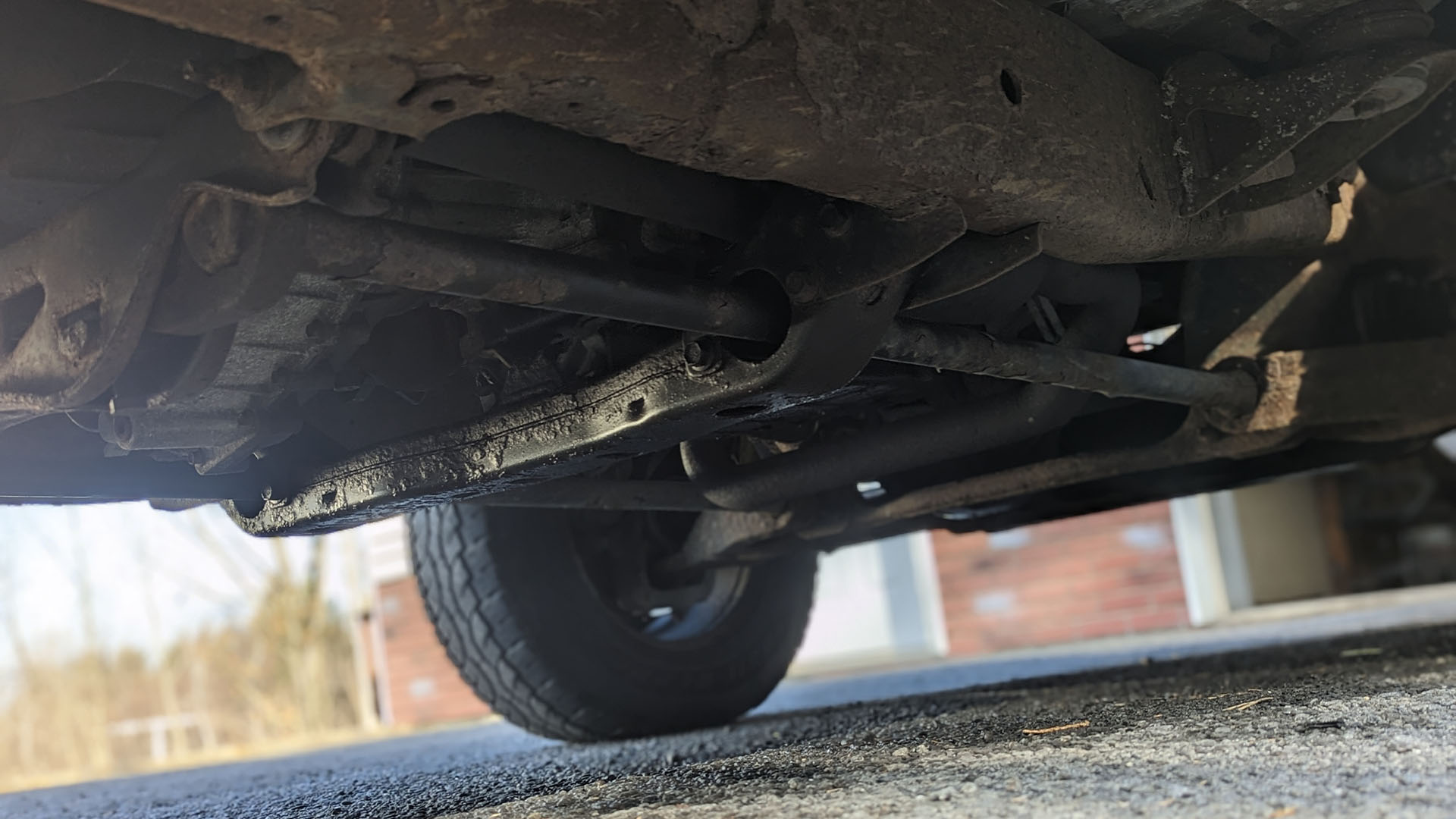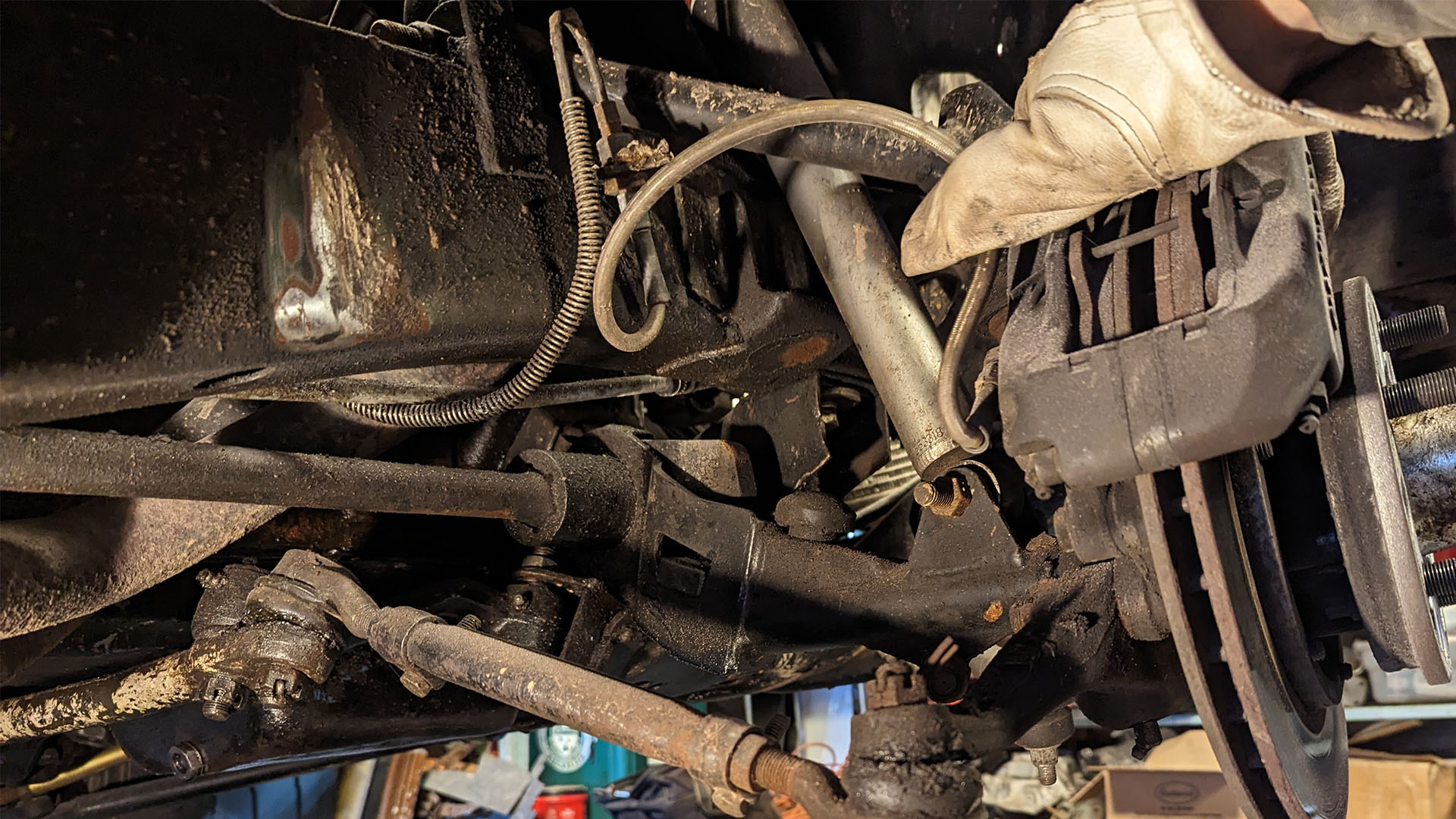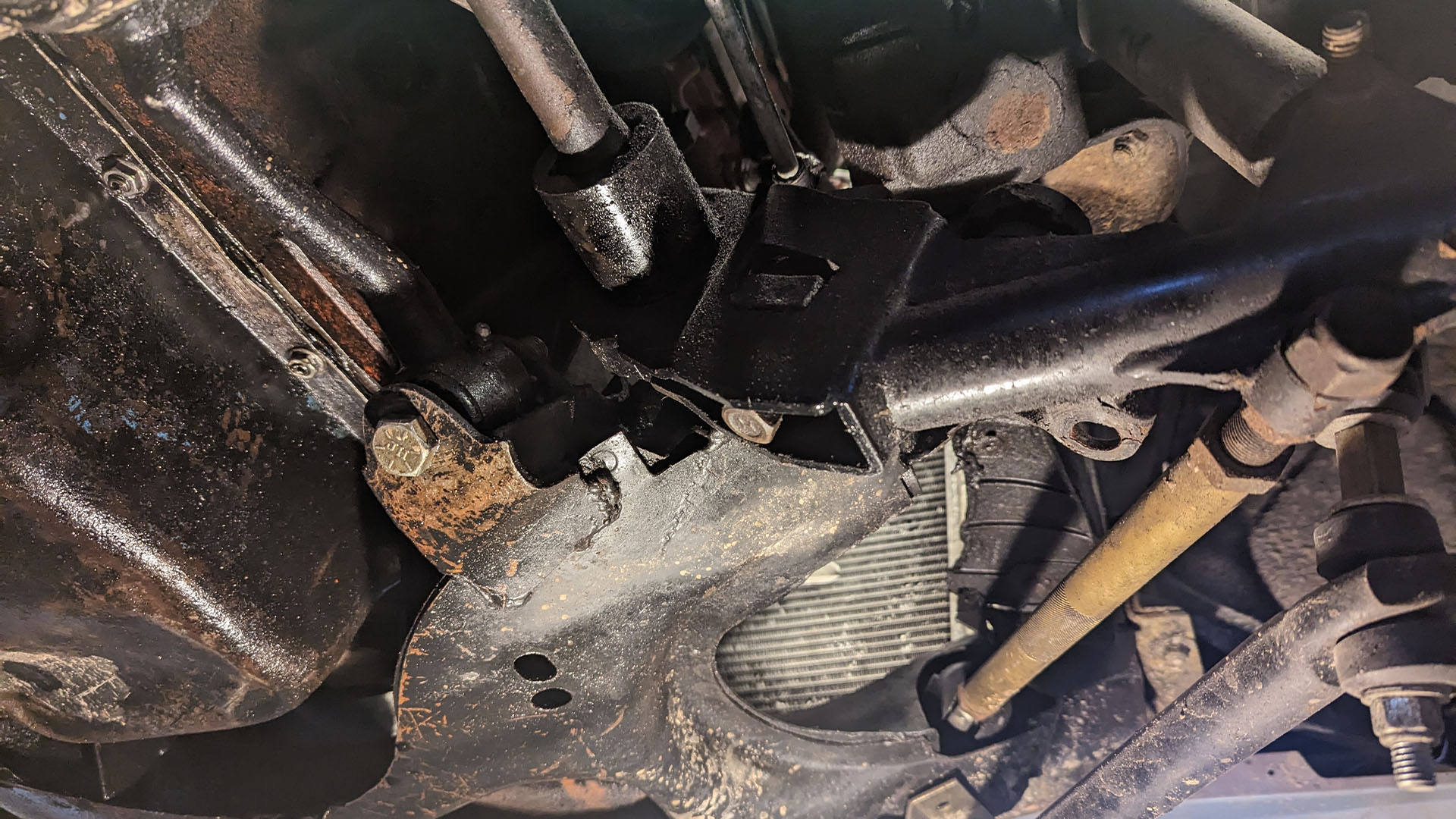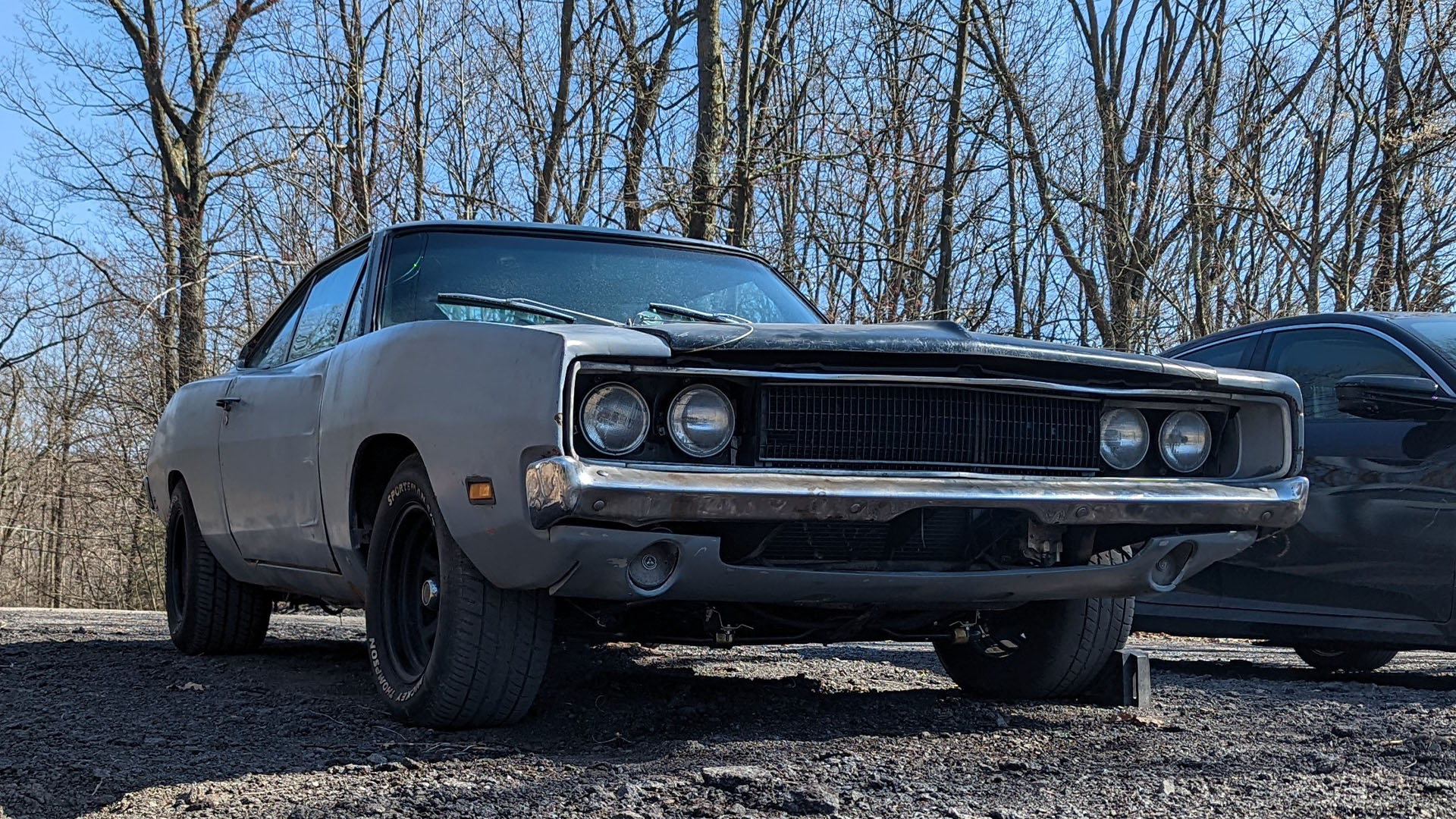

We may earn revenue from the products available on this page and participate in affiliate programs. Learn more ›
I recently wrote a piece discussing some of the basic differences between coil springs and leaf springs. But while putting the piece together, I ran into an interesting problem. Despite coil springs being the most common type of spring used in vehicles today, I don’t personally own a car or truck that feature them.
Out of all the vehicles in my driveway, the only one is my girlfriend’s Honda Civic—which was gone at the time—while both my 1969 Dodge Charger project and my 2003 Dodge Ram use a combination of torsion bars and leaf springs. That’s why I relied on Peter Nelson to snap a few pics.
But it brought up an interesting point. Leaf springs are old tech, but they’re still relevant as they’re used in passenger vehicles to date. Torsion bars, however, are slightly more obscure as it’s been a while since they’ve been featured in any mainstream car or truck, and many might not even know what they are.
Those who do, myself included, almost always go out of their way to tell you how awesome torsion bars are when they come up in discussion. And that’s what occurred in the comments. So, what gives? Why would anyone love torsion bars so much if they aren’t even used in vehicles anymore? Let’s talk about it.

What is a Torsion Bar?
A torsion bar, not to be confused with a torsion beam — that’s a conversation for another time — is a type of spring that can be used to suspend a vehicle, like any other spring. However, it is unlike a coil spring or a leaf spring in that its function isn’t immediately obvious. To the untrained eye, a torsion bar looks like an ordinary rod.
Torsion bars are made of spring steel. In fact, a commenter under the name Track Rat M summed up the construction of a torsion bar quite well: “The torsion bar is nothing more than a coil spring straightened out. Or a coil spring is nothing more than a coiled-up torsion bar. Take your pick, both statements are correct.”
The way a torsion bar works is pretty simple, as it resists torsion or twisting. When a torsion bar is placed into a suspension system, it is mounted in its natural state. One end mounts to the lower control arm, the other to a fixed position on the chassis. Spring tension is set by twisting the bar The torsion bar works to rotate back to its original state. The counter-rotation forces the lower control arm toward the ground, effectively suspending the vehicle just the same as a coil spring or leaf spring would.

What Are the Benefits of Torsion Bars?
While Chrysler vehicles, like my Charger, famously used torsion bars, they were not the first or only vehicles to feature them. Torsion bar suspension systems first appeared in cars in the 1930s, and were used for passenger vehicles until fairly recently. In fact, many of you truck nuts likely cut your teeth on an early 2000s something or another with torsion bars on the front end.
They’re coveted for their legendary durability and maintenance-free nature. In fact, the torsion bars beneath the Charger have been in that car since at least the early 1980s. If they aren’t the original torsion bars for that car, they’re likely from the 1969 Superbee donor that supplied the 383 that was in it.

Dependability isn’t all that made them a hit for the performance and off-road crowd, though. Adjustability is another thing many people love about torsion bars. Most vehicles with torsion bars feature an adjusting bolt. By twisting this bolt you change the position of the torsion bar key, or lever, that is fixed to the torsion bar, adding or releasing a twist from the bar.
In other words, you can change the ride height whenever you want to. This does offset geometry and can pose issues elsewhere in the system, but that’s still a pretty major deal for anyone that wants to make changes to their vehicle on the fly. Most anything that can rival this feature are expensive or complicated, if not both.

Why Aren’t Torsion Bars Still Used?
Torsion bars offer the best of reliability and adjustability. They’re also incredibly stable, offer decent ride quality, and can be changed with relative ease in comparison to other spring types. They truly are the complete package. So, where are they?
Well, to be fair, torsion bars do have their fair share of shortcomings. One of the most common issues raised with torsion bars is that they don’t provide progressive spring rates. A fixed spring rate forces owners to make compromises when chasing performance or comfort. Also, depending on the exact positioning, they may to be vulnerable to debris and obstacles and are often to blame for the excess strain on other components. The vulnerable positioning is particularly concerning as even small nicks in the torsion bar can easily lead to the bar breaking under stress.
Coil springs and leaf springs can both offer progressive spring rates. Coil springs also fit into the various suspension systems deemed favorable by modern motorists. These factors alone make it clear why torsion springs aren’t as common as they used to be. However, they are still at large outside of the realm of mass-production passenger cars. Again, they are still commonly used on combat vehicles, and you can still find them used in a wide variety of racing applications, such as sprint cars, stockcars, and even F1 cars.
Torsion Bar Video
Torsion bars are before my time. Even if I personally own and mess around with vehicles that feature them, I still haven’t even scratched the surface of what these springs have to offer. That’s why I wanted to include a video from an industry veteran, and personal hero of mine, who’s overqualified to speak about torsion bars.

More From The Drive
- Chris Rosales tells you what a catalytic converter is
- Jonathon Klein is here to teach you how to use a torque wrench
- Here’s what Peter Nelson has to say about the 2022 BMW i4 M50
- Ram is ready to showcase its midsize model, and Caleb Jacobs has the scoop
- Nico Demattia took the 2023 Maserati Gran Turismo for a spin and tells you all about it
